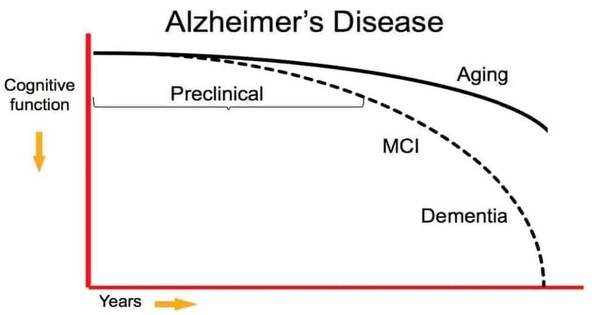A new study sheds light on how amyloid-beta and tau proteins affect brain activity and potentially contribute to cognitive impairment in Alzheimer’s disease. Amyloid beta and tau proteins have long been linked to Alzheimer’s disease. People with the condition suffer from cognitive deterioration due to the abnormal development of these proteins. However, it is unclear how it accomplishes this.
A recent study from the labs of Sylvain Baillet at The Neuro and Sylvia Villeneuve at the Douglas Research Centre sheds light on how these proteins influence brain activity and may lead to cognitive decline.
Our study provides direct evidence in humans for the hypothesized shift in neurophysiological activity, from neural hyper-to hypo-activity, and its association with longitudinal cognitive decline. These results parallel findings from animal and computational models and contribute to the advancement of our understanding of the pathological mechanisms underlying the preclinical stage of Alzheimer’s disease
Jonathan Gallego Rudolf
The team, led by Jonathan Gallego Rudolf, a Ph.D. candidate in Baillet and Villeneuve’s labs, recruited 104 patients with a family history of Alzheimer’s. They scanned the subjects’ brains with positron emission tomography (PET) to determine the proteins’ presence and location, as well as magnetoencephalography (MEG) to record brain activity in these areas.
The researchers analyzed the results of the two scans and discovered that brain areas with higher levels of amyloid-beta displayed macroscopic signs of brain hyperactivity, as evidenced by increased fast- and decreased slow-frequency brain activity. People with both amyloid-beta and tau in their brains showed a trend towards hypoactivity, with increasing levels of disease causing brain activity to slow down.

Using cognitive tests, the team revealed that those with higher rates of amyloid-tau linked brain slowing had a worse impairment in attention and memory.
The findings indicate that the interaction of amyloid-beta and tau causes changes in brain activity before obvious cognitive symptoms arise. Rudolf intends to rescan the same subjects over time in a subsequent study to determine whether the buildup of the two proteins promotes further slowing of brain activity and whether this accurately forecasts the participants’ cognitive evolution.
“Our study provides direct evidence in humans for the hypothesized shift in neurophysiological activity, from neural hyper- to hypo-activity, and its association with longitudinal cognitive decline. These results parallel findings from animal and computational models and contribute to the advancement of our understanding of the pathological mechanisms underlying the preclinical stage of Alzheimer’s disease,” says Rudolf.
















